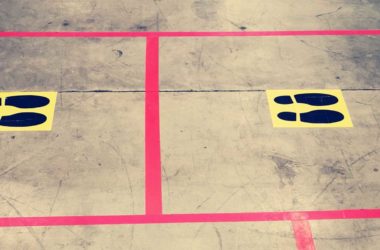Maintenance, repair and operations (MRO) is vital for keeping your business running smoothly. An intrinsic part of this is workplace safety as, in the absence of safety products and personal protection equipment, your staff will be unable to carry out necessary maintenance tasks without risking serious injury.
Whilst health and safety considerations have always been important, they will be of particular concern when preparing to return to work after the Coronavirus pandemic. Through the provision of adequate protection and by ensuring that protocols are in place, you can be certain that risks are mitigated and that health and safety is improved in the workplace.
This guide explains how to ensure high levels of safety within the context of MRO by exploring safety systems, safety products, and how to manage workplace protection.
Personal Protection Equipment
Personal protection equipment (PPE) is fundamental to MRO safety in that, regardless of the kind of maintenance and repair work that you need to carry out, many of the products listed below will almost certainly be required:
- Head protection such as hard hats, safety helmets and bump caps are essential as they often save lives. However, such protection can also include face shields, safety glasses and disposable head and face gear, including hairnets and beard masks.
- Safety clothing with features for high-visibility are also important and are typically required in MRO environments. Other safety clothing may include waterproofs, body warmers, chemical-resistant, flame-retardant and anti-static clothing. Gloves also fall into this category, with non-conductive and thermally insulating gloves being common sub-groups. Additionally, Foot protection such as safety boots may also be required.
- Fall protection is necessary for any work involving heights. It comprises harnesses, positioning belts, lanyards and safety ropes, as well as winches and tripods.
- Respiratory protection is needed wherever staff are likely to work around dangerous chemicals and vapors. This includes respiratory face masks and dust masks that filter out airborne particles resulting from materials such as drywall, brick, wood, fiberglass, or silica.
- Hearing protection is another indispensable category that encompasses earmuffs and earplugs to protect staff in noisy environments. Such environments can include any workplace where volume exceeds normal levels.
Personal Hygiene and First Aid
Workplace safety often rests on an MRO team having a rigorous hygiene policy. Ensuring that workers take responsibility for cleaning themselves and replacing dirty or contaminated clothing is paramount, since it can prevent the occurrence and spread of illnesses and infections.
Similarly, it’s also important to have an effective first aid policy and capability. While the right safety equipment and practices should keep accidents to a minimum, it’s always difficult to completely eliminate risk, particularly when human error may be a factor.

As such, MRO workplaces should be well-equipped both with amply stocked first aid kits and with people on site who are trained in administering first aid. In fact, most countries have laws in place which obligate employers to do just this so it’s not only a health and productivity requirement, but also a legal one.
Site Safety and Signage
Aside from having the right equipment and training in place, workplace safety flows from MRO managers ensuring that their site is appropriately organised. In practice, this means two things:
Firstly, it requires MRO managers to ensure a sufficient level of monitoring of workplace activities and of MRO personnel. It is essential that MRO managers and leaders maintain a ‘bird’s eye’ view of everything happening on site. This can involve the use of a computer maintenance management system (CMMS) or an enterprise asset management (EAM) system to ensure that necessary safety equipment is properly stored and preserved. It also involves ensuring that individuals are monitored for levels of stress, and that MRO practices and conditions are regularly reevaluated from the perspective of safety.
Secondly, it means that MRO sites should be physically organized in a manner conducive to optimum safety. This includes labelling hazards or potential dangers with visible workplace signs. For example, if a particular area is dangerous it should be demarcated with appropriate safety tape and hazard signs.

Taking Responsibility
Workplace safety is an important issue, especially in light of the fact that over 5,000 people died at work in the US in 2018. However, because safety is neither an automated process nor something that directly impacts a company’s bottom line, it doesn’t always receive the full attention that it deserves.
It is therefore essential that MRO managers take responsibility for workplace protection and the safety systems that their sites have in place. They need to ensure that all personnel are equipped with the necessary PPE, that technicians follow best practices, and that workflows are constantly monitored for potential dangers. It is only by ensuring adequate safety that risk can be kept to a minimum.











